repurposed factory tiles and pivoted glazing define permeable residence in india
A permeable residence made from REPURPOSED materials
In the heart of Kochi, India, architect Koshy P. Koshy built the ‘Koshish’ residence by repurposing old mangalore tiles, steel, and windows sourced from a run-down textile factory, 8 kilometers away. The design integrates a minimalistic mixture of industrial materials and open spaces throughout to create a sense of oneness with the surrounding nature. The result sees a permeable structure that with elevated columns, pivoted glazing, and terracotta-tiled walls, blurring the line between indoors and outdoors, and enriching the entire area and its occupants.
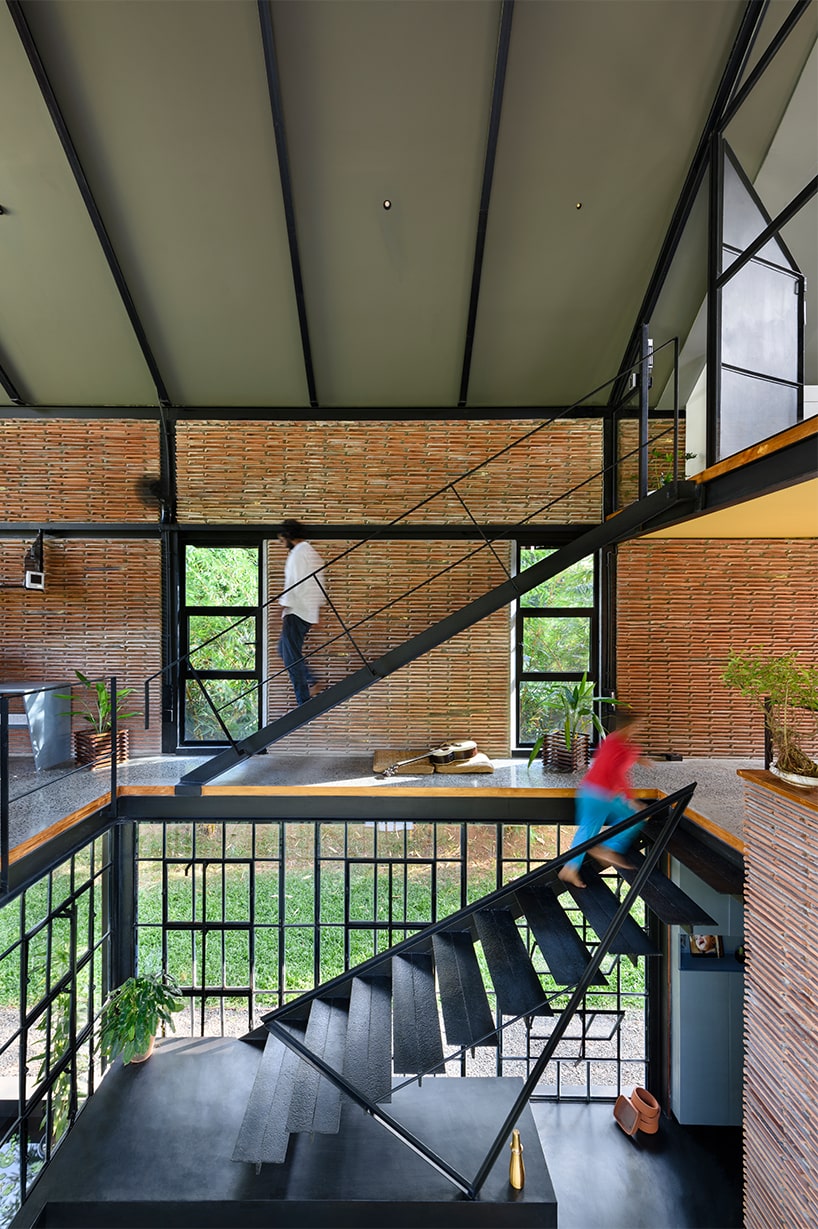
transition between the ground and first floors
all images courtesy of Koshy P. Koshy
collaborative spaces and brainstorming pod
The story of Koshish begins as one traverses the narrow mud road that leads to its vibrant, red entrance. Inside, tiles from four different locations were procured to construct the project’s pathways, walls, and roof. The architectural design by Koshy P. Koshy gives each floor its own distinct purpose. The ground level consists of a verandah adjacent to a koi pond, washrooms, and a utility space. On ascending the stairs, one arrives at the collaborative space, finished with terrazzo flooring and encircling the triple-height atrium that binds each level together. With a cantilevered balcony along the north side, and glazing on the east side, the building’s design maximizes ventilation and natural lighting while providing a thorough view of the rest of the site. The architect shaped the second and final level as a brainstorming pod, accommodating a clerestory window that directs the light towards the primary workspace.
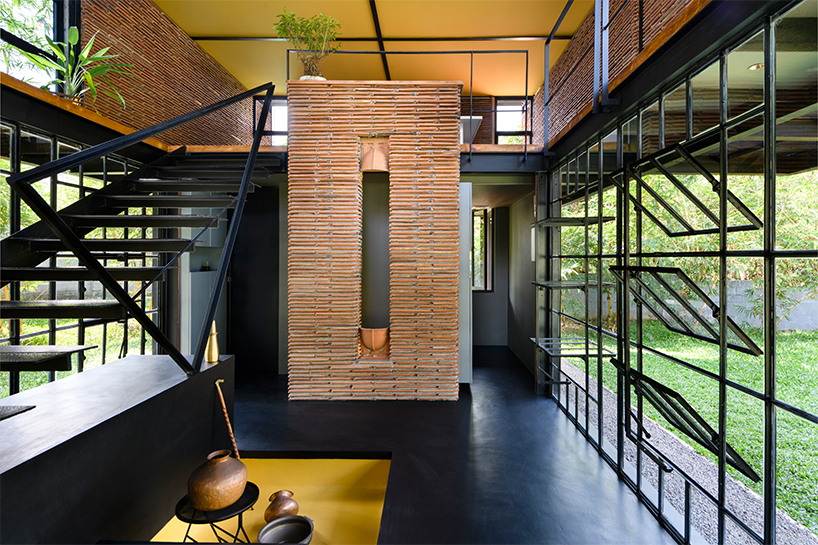
breathable window facades blend the structure with the garden
Divided floors foster collaborative spaces with natural light
Designed to create an interplay of levels on each floor, the inhabitants experience a sequence of descending heights as they transition through each space. A subtle play of sunlight and shadows across the space ensures that there is no moment of pause throughout the course of a day in Koshish. Additionally, structurally, the use of terracotta tiles in this project holds many advantages including cooler temperatures, breathability, and a timeless appearance. With great importance given towards sustainable practices and intent on providing an environment indistinguishable from the comforts of one’s own home, Koshish breathes life into its inhabitants, materials, and timeless architecture.
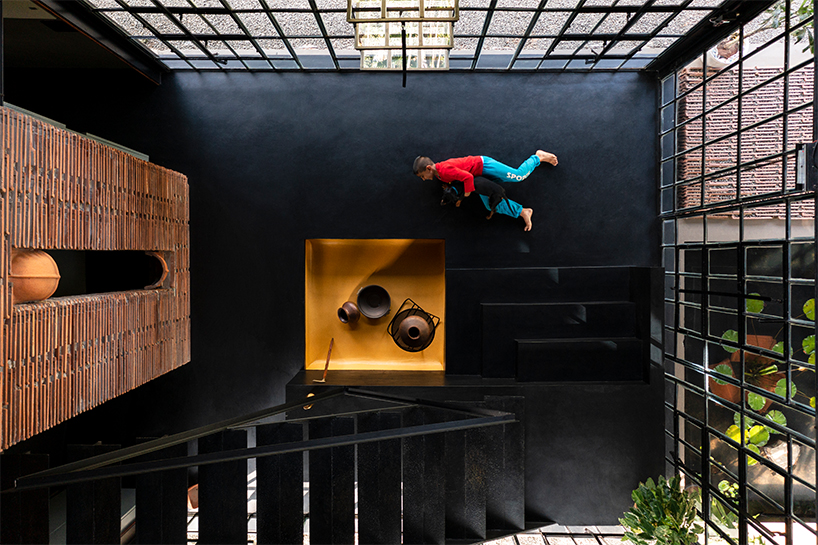
floor to ceiling grid windows offer natural light and ventilation
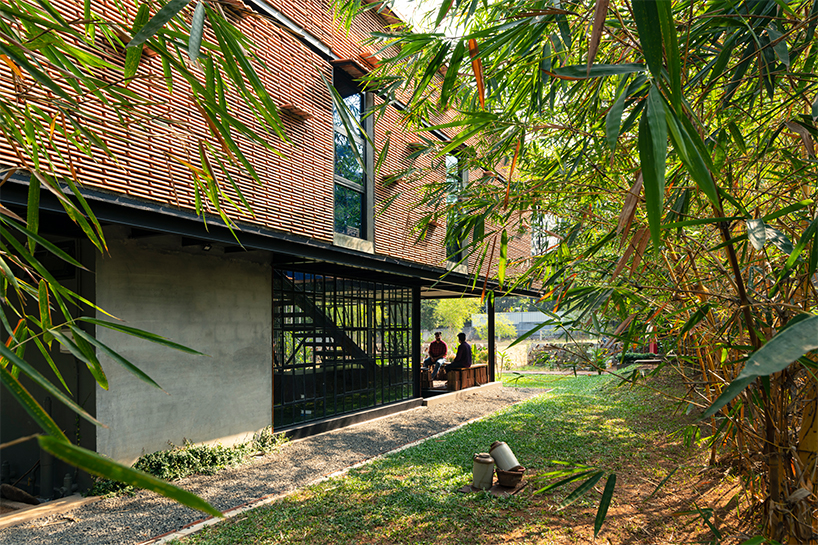
open spaces in the garden
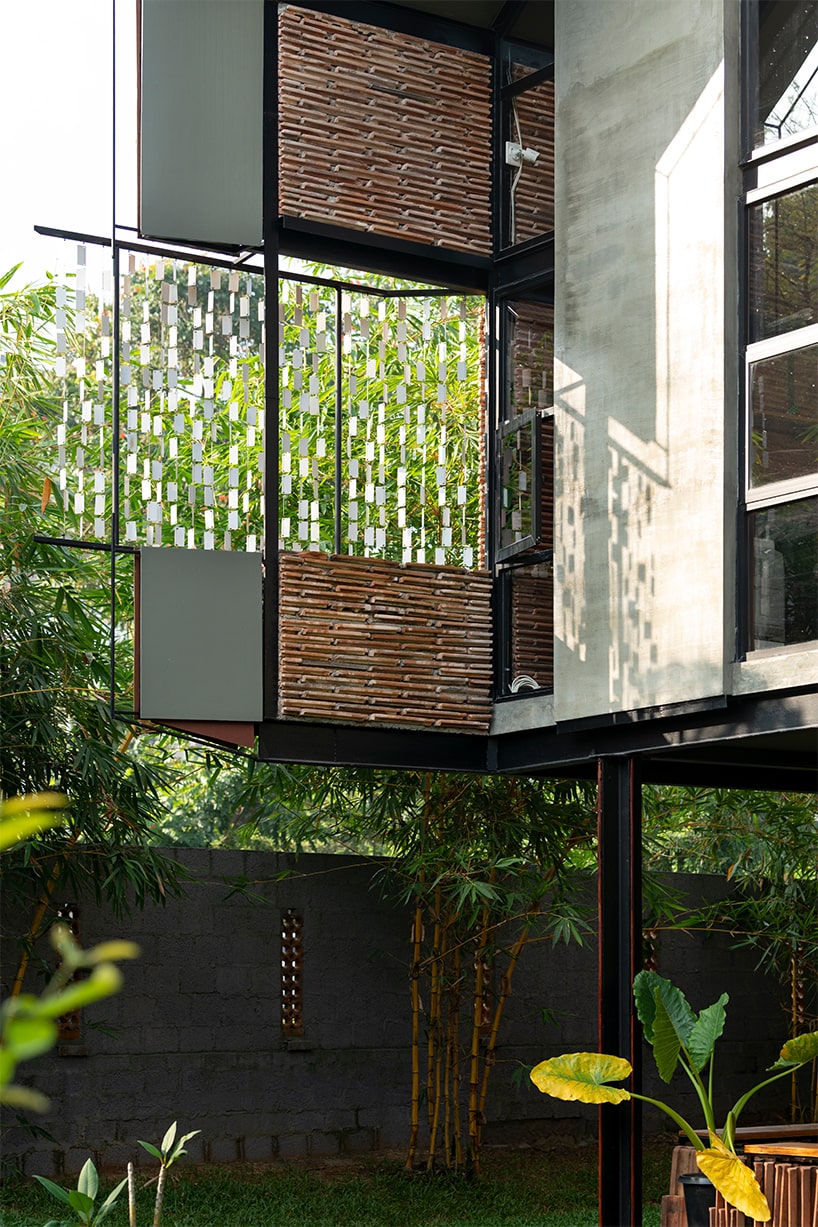
metal sheets subtly create an element reminiscent of leaves

